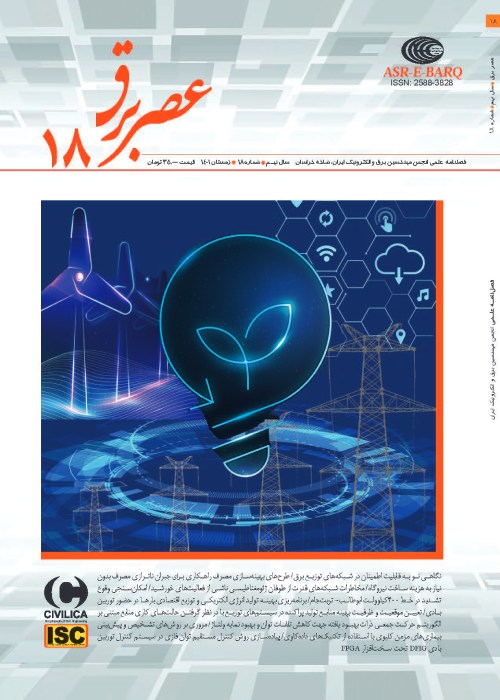DG Optimal Allocation and Sizing in Distribution Systems Considering the Working Modes of the Resources Based on the Enhanced Particle Swarm Optimization Algorithm to Reduce Power Losses and Improve the Voltage Profile
With the increasing penetration of DG resources in distribution systems, the performance of these systems has changed from passive to active mode and the possibility of two-way power exchange between the main network and the distribution network has been provided. The use of DG resources in the distribution system has economic-technical advantages if their installation location and production capacity, which are influenced by the working mode (the ability of DG to exchange both active and reactive power components) and the control strategy used in the converters, be optimaly selected. In this article, a method will be presented to solve the placement problem and determine the optimal capacity of DG resources (OPSDG) in distribution networks, in which the load flow injection model is used to model DGs and the working state of the resources is also considered. This model minimizes the influence of the control strategy of converters on solving the problem. In the method discussed in this article, the objective function is a weighted combination of voltage profile indicators and power loss reduction. To optimize the objective function, the enhanced algorithm of particel swarm optimization algorithm is presented. The enhancement of the algorithm will be done through the use of crossover and dynamic mutation operators for the set of particles. The simulation results show that under the strategy presented in this article, the voltage profile and active power losses will be in the optimal state.
-
Novel Adaptive Recurrent Neural Controller based on VSC HVDC Damping Controller to Improve Power System Stability
*
International Journal of Smart Electrical Engineering, Winter 2023 -
Supplementary Damping Controllers Design in VSC HVDC Systems and Wind Farms to Improve Stability and Energy Conversion in Wind Turbine Using Proposed Genetic-Bat Algorithm
*, Ehsan Akbari, Nematollah Askari, Vazir Ahmad Tajik, Hamed Orojlo, MohammadAli Kazemi, Ghorban Ghasemi
Karafan,



